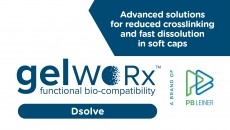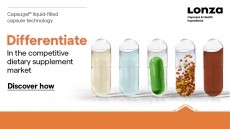Zymes solubilizes omega-3 using Ubisol-Aqua
omega-3 fatty acids by reducing them to a nano-scale, making the
essential fatty acids more bioavailable and opening up more uses in
product formulations.
Co-founder and executive VP of global business development Benjamin Mamola told NutraIngredients-USA.com that there are other techniques for solubilising omega-3, but that Zymes' method creates particles with an average size of 34 nanometers. This provides improved solubility and enhanced bioavailabilty. The company is presently conducting studies that will provide data on bioavailability of its solubilized omega-3, but Mamola said: "We believe the technology will greatly enhance the health benefits of these products to consumers." Mamola added that the technology "makes it possible to more effectively deliver omega-3 fatty acids in foods and beverages". It is suitable for DHA, EPA and ALA. The extention of applications is mainly due to better solubility, which results in a finished product with better sensory characteristics - for instance, less cloudy, and without taste impairment. Most of Zymes' work to date using the technique, known as Ubisol-Aqua, has revolved around co-enzyme Q10. Some of the other techniques for solubilising CoQ10 are said yield a particicle size of 300 nanometers, at which scale the resulting product is "milky". Ubisol-Aqua, on the other hand, yields a water product that Manola described as looking like "a gorgeous glass of chardonnay". In January the FDA affirmed GRAS (generally recognised as safe) status for Zyme's CoQ10, called HQO. The solubilization technology, to which Zymes has the exclusive worldwide rights and which is available for license, was developed at the National Research Council of Canada. It involves a combination of nanotechnology and complexation using neutral, non-ionic hydrotopes, of which the lead compound is polyoxyethanyl-a-tocopheryl sebacate. The water-insoluble substance forms a non-covalently bound complex with the hydrotopes, which causes them to assemble into micelles with a hydrophilic exterior and a hydrophobic interior, that contain the substance. Other nutritional ingredients to which the technique has been applied include vitamin A acetate, vitamin A palmitate, vitamin B pentapalmitate, alpha-tocopheryl acetate, beta-carotene and astaxanthin. It has also been used for pharmaceutical substances. Zymes is not the only company with technology that is capable of reducing bioactives to a nanoscale. For instance, Germany's AquaNova uses a patented technique called NovaSol to reduce ingredients to micelles of 30 nanometers. NovaSol has also been applied to CoQ10 and omega-3 (with ascorbic acid) - as well as around 15 other food and supplement ingredients.











